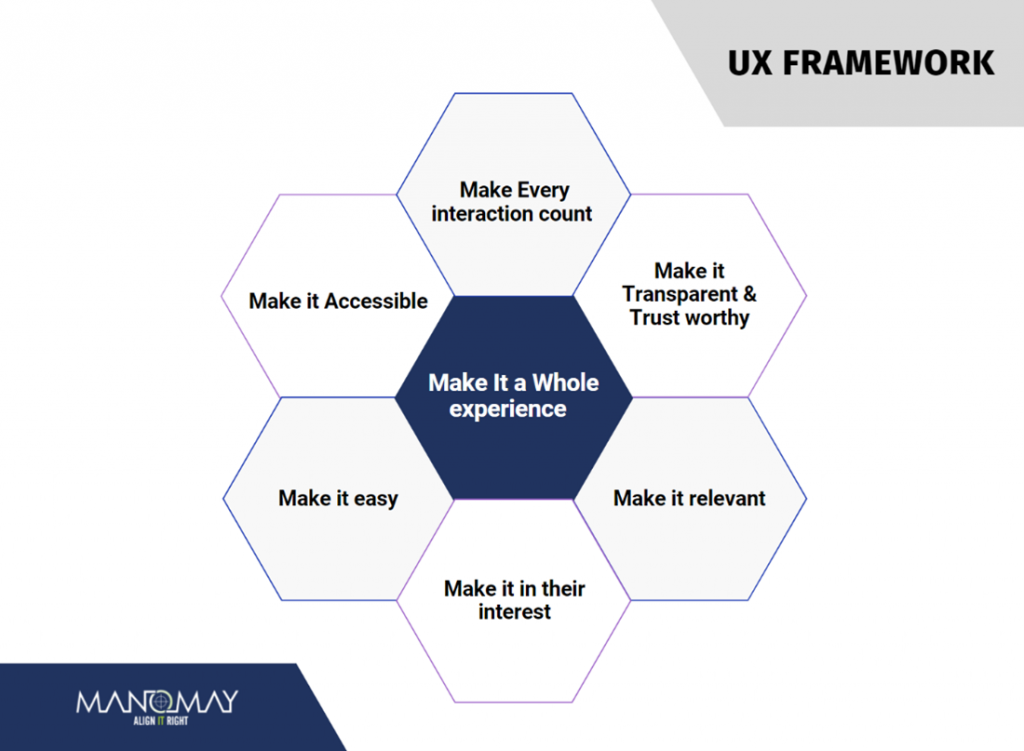When talking about user experience (UX), term user interface (UI) design will inevitably crop up. However, it is essential to recognize that UX and UI are different. While the latter focuses on how the product’s surface looks and functions, UX is a deeper take on the overall journey of the User. It encompasses process, technology, communication & empowerment at every interaction.
UX can be end-to-end, catering to all the stakeholders in the process. However, the focus of this article is on the one key segment (of users) that drives you to be better – your ‘Customers.’
As they say, customer experience is the new battleground for differentiation. Modern customers – are gravitating towards the companies that simplify the user experience and focus on personalized interactions with convenient, trusted, and automated access to services and information. Often this includes DIY (Do It Yourself) enablement.
For an industry that is heavily regulated, the fervour around documents and forms is particularly deep-rooted. Therefore, the biggest challenge is in keeping the experience simple, easy & engaging despite the hovering need to get them (the users) through a labyrinth of information spread across different forms and contract documents.
Here are a few things that might impede you in delivering a superior user experience,
- Focus remains on User Interface and creativity rather than journey experience
- UX is not according to the segments you are serving
- The focus is on digitization and not on process improvement
- Having no feedback loop/ improvement process
- Lacking human touch if tech-focused or vice versa
- Present customers with information rather than concentrating on their experience
So how do we resolve this? How do we make our customers happy?
Introducing the key ‘Guiding Principles’ that can help you craft a superior user (customer) experience,

Fig 1: Biz-Tech framework to deliver superior User Experience
As in,
- If you are struggling to decide if it must be a web portal or a mobile app or a chatbot, know your customer segments
- If you want to make your customers self–sufficient, design your strategy to make it easy, fast, accessible, and personal
- If you are communicating, be proactive and know how you can get their attention
- If you want to make every interaction count and every experience memorable, know when to use a machine and when to resort to the personal touch.
In the end, the manifestation of your strategy could be through any medium (people, process, and technology) but the key is for you to ‘Know’ your customers – their wants, their demands, and their expectations. Looking at yourself from outside in. As they say, you sell a service and not a product
A simple example, of a tool that used the above guiding principles at the heart of its design, POP (Personal insurance Office in Pocket – a customer servicing mobile app for Gen X, Millennials, Gen Z, and those tech savvy baby boomers)
- Ease of Access & Transaction processing – One stop- shop for everything insurance with – Intelligent, Intuitive, and easy transaction processing, quick access tools, pre-populated data, offline access
- Personalized Offerings – custom cover packages, custom reminders, and notifications through preferred medium
“Usability is about people and how they understand and use things, not about technology”
Biz Tech Insights Team Manomay
Disclaimer: The views and findings expressed in this material are for informational and educational purposes only. It is not intended as a guideline, recommendation or a substitute to any form of Professional (Consulting or Technology) advice. Under no circumstance shall we bear a legal responsibility for the use or reliance of any information mentioned in this article.Unless otherwise specified, the views, case studies and findings expressed herein are our own. The content displayed here is the Intellectual Property of Manomay Consultancy Services (India) Pvt Ltd. You may not reuse, republish or reprint any of the aforementioned content without our written consent.

